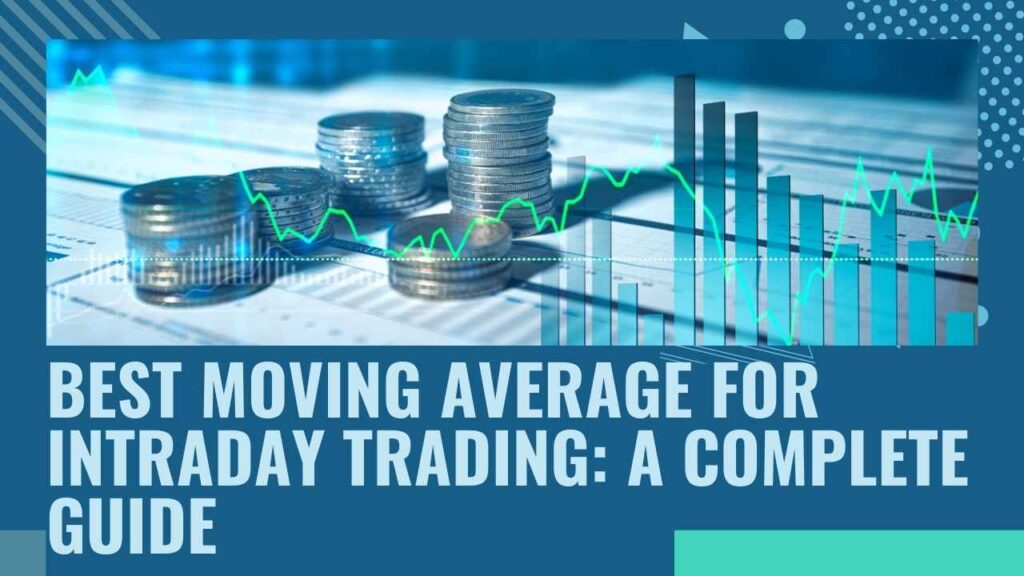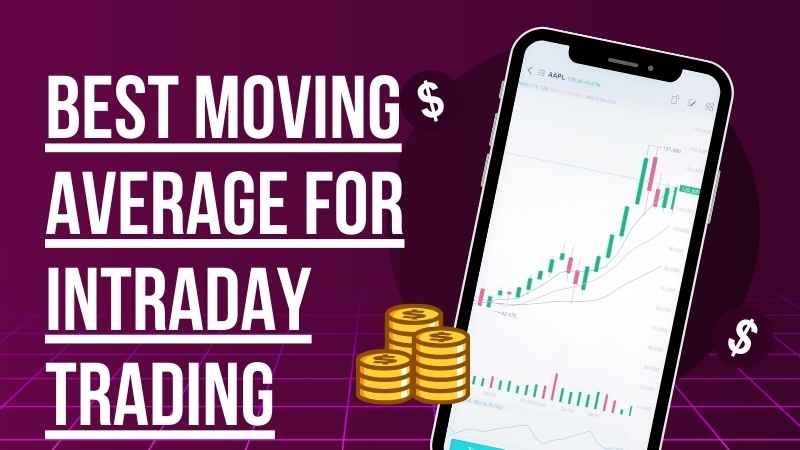Intraday trading, also known as day trading, requires quick decision-making, precise timing, and solid technical tools. Among these tools, moving averages (MAs) stand out as one of the most reliable indicators. But with multiple types and timeframes available, traders often ask: What is the best moving average for intraday trading?
This guide dives deep into the subject, helping you choose the right moving average for your strategy and style.
Table of Contents
- What is a Moving Average?
- Why Moving Averages Matter in Intraday Trading
- Types of Moving Averages
- Simple Moving Average (SMA)
- Exponential Moving Average (EMA)
- Weighted Moving Average (WMA)
- Best Moving Average Periods for Intraday
- Top Moving Average Strategies for Day Trading
- Moving Average Crossover
- Dynamic Support & Resistance
- Trend Following with MAs
- EMA vs SMA: Which is Better for Intraday?
- Combining Moving Averages with Other Indicators
- Common Mistakes to Avoid
- Real-World Examples and Case Study
- Conclusion
- FAQs
- External Resources

What is a Moving Average?
A moving average (MA) is a technical indicator that smooths out price data by creating a constantly updated average price over a specific time period. It helps traders identify the direction of the trend and potential entry or exit points.
- Formula for SMA: SMA=P1+P2+…+PnnSMA = \frac{P_1 + P_2 + \ldots + P_n}{n}
- Formula for EMA: EMAtoday=(Pricetoday×α)+(EMAyesterday×(1−α))EMA_{today} = (Price_{today} \times \alpha) + (EMA_{yesterday} \times (1 – \alpha)) where α=2n+1\alpha = \frac{2}{n+1}
Why Moving Averages Matter in Intraday Trading
In fast-moving intraday markets, traders need a simple, clear way to gauge the trend. Moving averages:
- Filter out noise from price movements
- Confirm trend directions
- Identify support and resistance zones
- Trigger entry and exit signals
Types of Moving Averages
Simple Moving Average (SMA)
- Equal weight on all price points
- Slower to react to price changes
- Useful in identifying longer-term trends
Exponential Moving Average (EMA)
- More weight on recent prices
- Responds quicker to market changes
- Preferred by most intraday traders
Weighted Moving Average (WMA)
- Custom weighting applied
- Faster than EMA in some cases
- Less commonly used but effective for scalping
Best Moving Average Periods for Intraday
The ideal moving average period depends on your trading style:
| Trading Style | Timeframe | Recommended MAs |
|---|---|---|
| Scalping | 1-5 min | 9 EMA, 20 EMA |
| Short-term Day Trading | 5-15 min | 20 EMA, 50 EMA |
| Trend Following | 15-30 min | 50 EMA, 100 EMA |
| Reversal/Mean Reversion | 5-15 min | 9 EMA, VWAP |
Key Tip: The 9 EMA is considered one of the best for quick momentum trades, while the 20 EMA helps identify short-term trend directions.
Top Moving Average Strategies for Day Trading
1. Moving Average Crossover
Use two EMAs:
- Fast EMA (e.g., 9) and Slow EMA (e.g., 20)
- Buy when 9 EMA crosses above 20 EMA
- Sell when 9 EMA crosses below 20 EMA
2. Dynamic Support & Resistance
- Use 50 EMA or 100 EMA
- In trending markets, these MAs often act as support/resistance
- Enter trades near these levels with confirmation
3. Trend Following with MAs
- Use 20 EMA + 50 EMA
- Trade in the direction of the slope
- Use pullbacks to MA lines as entry points
EMA vs SMA: Which is Better for Intraday?
| Feature | EMA | SMA |
|---|---|---|
| Reactiveness | Faster | Slower |
| Intraday Use | Highly suitable | Less common |
| Lag | Less | More |
| Best For | Scalping, trend trades | Confirming longer moves |
Verdict: EMA is generally better for intraday trading due to its responsiveness.
Combining Moving Averages with Other Indicators
MAs work best when combined with:
- Relative Strength Index (RSI): For identifying overbought/oversold levels
- MACD: Confirms trend strength
- Volume Profile/VWAP: Confirms institutional support/resistance
- Price Action: Candlestick patterns at MA levels improve accuracy
Common Mistakes to Avoid
- Overfitting: Using too many MAs or timeframes
- Ignoring Context: MAs are lagging—don’t trade blindly
- No Volume Confirmation: Volume validates MA signals
- Using MAs in Choppy Markets: Leads to false signals
Real-World Examples and Case Study
Example: 5-Minute Chart – AAPL
- Setup: 9 EMA + 20 EMA crossover
- Signal: 9 EMA crossed above 20 EMA at 10:15 AM
- Entry: $172.50
- Exit: $175.00 (when 9 EMA crossed below)
- Profit: +1.45%
Example: Trend Reversal
- Stock: TSLA on 15-min chart
- Signal: Price pulled back to 50 EMA with bullish engulfing candle
- Entry: $665
- Exit: $680
- Profit: +$15/share
These examples show how EMAs help identify actionable intraday setups.
Conclusion
Choosing the best moving average for intraday depends on your trading style and market conditions. While there’s no one-size-fits-all answer, the 9 EMA and 20 EMA are widely used for momentum and trend strategies. Mastering how to read and apply MAs in context can dramatically enhance your trade precision and profitability.
Key Takeaways
✅ EMA is preferred over SMA for intraday
✅ 9 EMA and 20 EMA are top choices for active traders
✅ Combine MAs with volume, RSI, and price action for accuracy
✅ Avoid using MAs alone in sideways markets
FAQs
Q1: Is 9 EMA good for intraday trading?
Yes, the 9 EMA is excellent for short-term momentum trades due to its quick response to price changes.
Q2: Can I use moving averages for scalping?
Absolutely. 9 EMA and 20 EMA on 1-minute or 5-minute charts are popular among scalpers.
Q3: What is the best moving average crossover for intraday?
A popular setup is 9 EMA crossing 20 EMA—simple yet effective for spotting trend reversals.
Q4: Should I use moving averages alone?
No. Moving averages are lagging indicators; combine them with volume and price action.
Q5: How often should I adjust my moving average settings?
Stick to proven settings like 9, 20, or 50 EMA unless you’re backtesting a new strategy.
External Resources
- Investopedia – Moving Averages Explained
- TradingView – Public MA Strategies
- BabyPips Guide to EMAs
- QuantInsti’s Moving Average Guide



